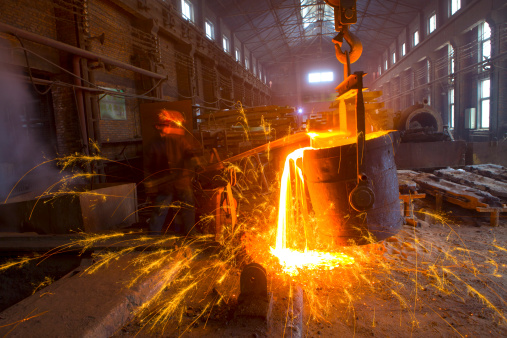Scrap Metal Collection
There are three main categories of scrap metal, each with its own life cycle. Scrap Metal collection comes in many shapes and sizes. Home scrap refers to the trimmings, pigged metal, and rejects generated during mill or foundry production. This type of scrap has known chemical properties, and it is quickly reprocessed on-site.
Scrap can be recovered from old automobiles, appliances, farm equipment, structural metal, ships, and other similar sources. Because the source materials may have been in use for decades, and are frequently mixed with other trash, the chemical properties of the scrap are unknown, therefore it needs to be sorted and processed before it can be used.
The scrap recycling industry refines unprocessed obsolete and prompt scrap into commodity grade material. Obsolete scrap collected from scrap metal dealers, auto salvage facilities, and industrial manufacturers is typically sent to large scale recycling facilities for processing. Once at the recycling facility, unprocessed scrap is screened for radiation and loaded on an infeed conveyor, where it is shredded into fist-sized pieces.
Separating Ferrous and Non-ferrous Metals
The scrap is shredded into small pieces so it can be efficiently and completely separated into ferrous, non-ferrous, and non-metallic materials. Oversized scrap (scrap too large to shred) is sized and sorted manually.
Ferrous alloys contain iron. Common ferrous alloys include steel, malleable iron, and gray iron. Because iron has magnetic properties, attraction to magnets is commonly used to identify ferrous alloys. Ferrous scrap is usually separated using an electromagnet.
Ferrous scrap is widely used in steelworks and in iron and steel foundries. Iron and steel account for approximately 90 percent of the mass of all metals consumed globally. The high consumption rate of steel allows it to be recycled using economies of scale – as a result, steel is the most recycled material worldwide.
More than 84 percent of the iron and steel used in foundries is recycled scrap.
Any metal that does not contain iron is referred to as non-ferrous. This category includes aluminum- and copper-based alloys. Non-ferrous alloys are non-magnetic, corrosion resistant, and – most importantly for the separation process – heavier than non-metallic materials. A powerful vacuum or cyclone can effectively suck small non-metallic pieces away, while leaving non-ferrous alloys in place.
Any problematic pieces not correctly separated by the magnetic drum or cyclone are recovered at a human-operated “hand-pick” line. At that point ferrous metals are compacted and shipped to steel mills and foundries, and the remaining material goes on to the non-ferrous separation process.
Some non-ferrous metals, often referred to as “specialty metals”, are rarely recycled because they are typically used in tiny amounts or complicated applications such as computer chips. Their value and relative volume does not legitimize the cost required to separate and recycle them.
Any non-metallic material or non-recycled specialty metal left over at the end of the separation process is sent to the landfill. The metal recycling industry is working to find new ways to efficiently separate and use more of these materials to reduce waste.
Refinement and Purification
After separation, scrap metal must undergo secondary refining. Recycling facilities sort obsolete scrap into rough categories, however the exact chemical properties remain a mystery. In order to become a usable raw material, scrap needs to be purified to the point that it meets known specifications.
Scrap pieces with similar properties are loaded into a large furnace and heated to the appropriate melting temperature for the metal. In the refinement process, slag forms and floats to the top of the molten metal. Additional slag (silica sand) is often introduced as part of the refinement process.
The molten metal is then tested and further refined to meet desired quality standards. Immediately before tap out and pouring slag and oxidized impurities are discarded to purify the metal. Once the molten metal achieves the necessary characteristics it is transferred to a cooling vessel to be solidified.
Manufacturing
Recycled scrap is shipped around the globe for use in mills and foundries. Hundreds and millions of tons are consumed each year, transformed into new products to begin the cycle anew.
Foundries source more of their materials from scrap yards and collection depots than from virgin-metal suppliers. More than 84 percent of the iron and steel used in foundries is recycled scrap metal.
Environmental Benefits
Recycling scrap metal reduces the environmental impact of metal production. First, it diverts waste from landfills – each year, the U.S. metal recycling industry converts more than 130 million metric tons of obsolete metal into useful raw materials.


